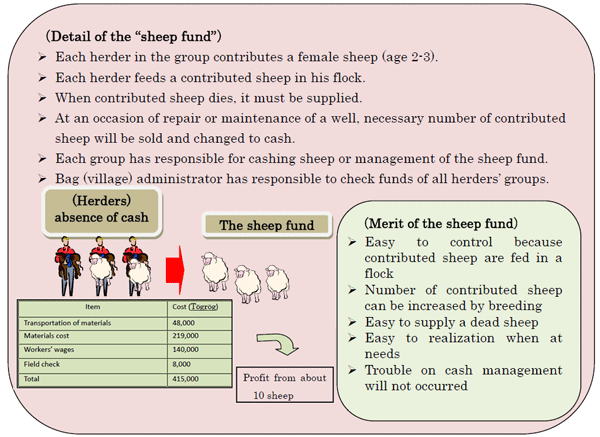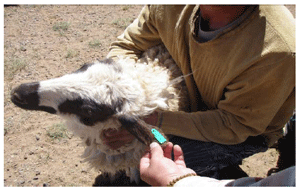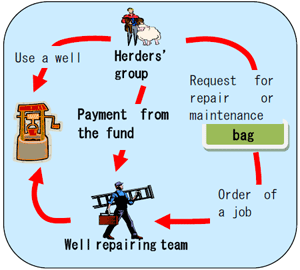Development of a methodology for self-reliant repair and maintenance of shallow wells by herders in the meadows of Mongolia
Description
Water resources in the meadows of Mongolia are dependent on wells. Deep wells that pump up the water by electric power are continuously maintained by the public administration. On the other hand, shallow wells which are around 10 meters in depth are neither repaired nor maintained, so many of them are out of use. And this constrains the effective use of pastures because herders are not able to get enough water for their livestock. The main reasons of this phenomenon are: 1) Delineation of responsibility among the actors for repair and maintenance plan is not clear; 2) Funding is insufficient for repairs or maintenance; and 3) There is a lack of effective technology in the meadows. Therefore, we have created a system that will solve these problems by empowering the herders who depend on the wells most to be able to repair and maintain the wells by themselves.
The details of this system are described below.
- Herders who use a well together should form a herders’ group (consisting of 10 to 20 households) and prepare a “Well Repair Plan”. It will give the herders shared ownership of the well and will clarify the responsibility of the members for repair and maintenance.
- It is very difficult for herders to collect the cash needed for the repair or maintenance of a well because of their economic limitation and lack of cash management. Thus, the herders’ group will create a “Sheep Fund” with live sheep to use as payment. This Sheep Fund is more acceptable to the herders and can accelerate the repair and maintenance of wells by the herders themselves (Fig. 1).
- Each herder in the group will feed a female sheep as a contributed stock, which must be clearly identified in the flock (Fig. 2). At the time of repair or maintenance of the well, some contributed sheep will be cashed in an order decided beforehand.
- The “Bag” (village) administration will select three herders that are necessary for repair and maintenance from the herders’ groups within the bag, and will organizes a “Well Repair Team”. They will be trained as professionals through the well repair manual or by technical training.
- The Work Flow of this system is as shown below (Fig. 3);
a. A herders’ group makes a request for repair or maintenance of a well to the “Well Repair Team” through the bag.
b. The “Well Repair Team” works on the repair or maintenance of the well.
c. The herders’ group will pay for the cost from the “Sheep Fund”.
As of December, 2009, 21 herders’ groups have been successfully established in Ovorkhangai, Mongolia, and two of them have already repaired their wells. The Mongolian government evaluated this system as very effective, and is taking measures to approve it as the maintenance method for shallow wells.
With this system, wells will be utilized effectively, and the expansion of utilizable pasture areas is expected.
Figure, table
-
]Fig. 1. Creation of the Sheep Fund -
Fig. 2. Identification of the sheep for the fund by ear-marking or tagging -
Fig. 3. Workflow of repair or maintenance of a well
- Affiliation
-
Japan International Research Center for Agricultural Sciences Rural Development Planning Division
- Classification
-
Research A
- Term of research
-
FY2009(FY2005~2009)
- Responsible researcher
-
YAMANAKA Isamu ( Rural Development Planning Division )
MATSUMOTO Takeshi ( Rural Development Planning Division )
- ほか
- Japanese PDF
-
2009_seikajouhou_A4_ja_Part3.pdf177.43 KB



